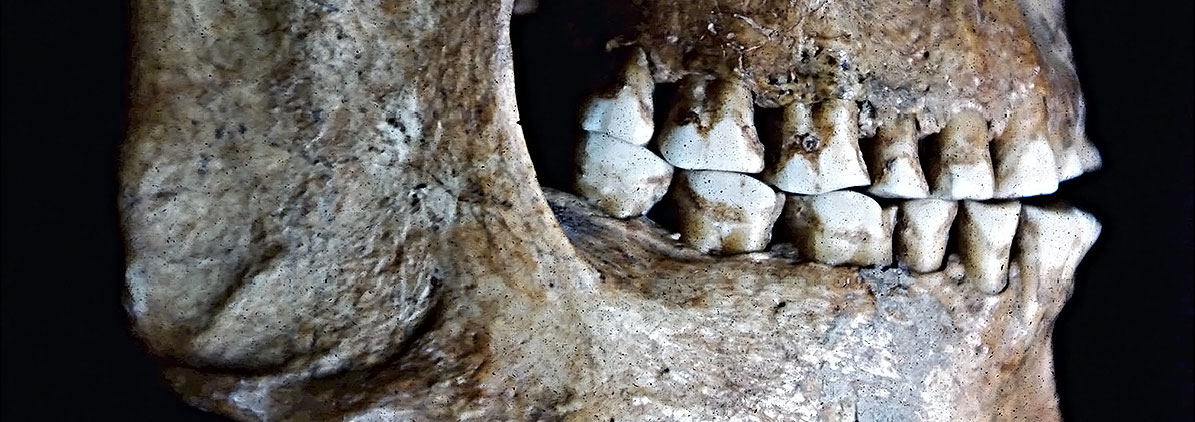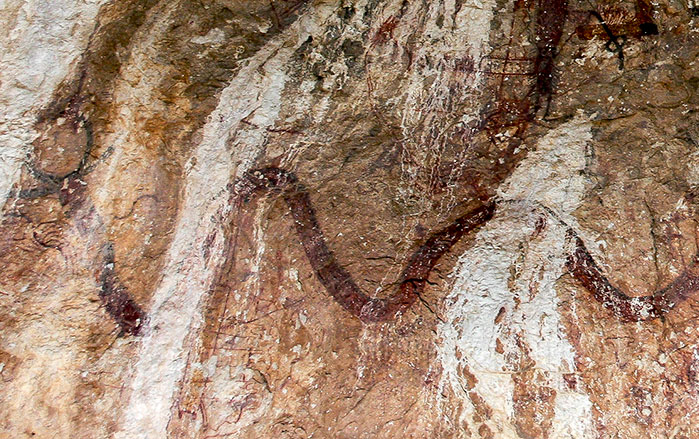
Try saying “f” and “v” and pay close attention to your lower lip and upper teeth. Would it surprise you to learn that these sounds are relatively recent additions to human languages? Languages, of course, develop over time as usage, meaning, and pronunciation change. But what about the ways our bodies have changed over the millennia? Could this also contribute to changes in language? In a new study, researchers from the Max Planck Institute for the Science of Human History and the University of Zurich have used evidence from paleoanthropology, speech biomechanics, ethnography, and historical linguistics to determine that, in fact, it is a combination of factors—both cultural and biological—that produces changes in language and has contributed to the diversity of languages that exist today.
In the Neolithic period, starting about 10,000 years ago, when the lifestyle of people in Europe and Asia changed dramatically as a result of the large-scale adoption of farming in place of hunting and gathering, their biology changed, too. Prior to this shift, the consumption of gritty, fibrous foods such as nuts and seeds, staples of the pre- Neolithic diet, put a great deal of force on children’s growing mandibles and wore down their molars. In response to the biomechanical stress of chewing these tough foods, people’s jawbones grew larger and larger over their lifetimes, and their molars drifted toward the front of the mouth, eliminating their childhood overbites. With the development of farming, easily chewable foods such as processed dairy products and milled grains were introduced into people’s diets. As the prevalence of these foods increased, people began to retain their childhood overbites well into adulthood.
In the 1980s, a linguist named Charles Hockett proposed that this physical change helped lead to a change in the sorts of sounds included in languages, but his theory gained little traction. The current team, led by linguists Damián Blasi and Steven Moran, set out to test Hockett’s theory. They anticipated finding that he had been incorrect. The team used computer models of jaws and teeth exhibiting different bite patterns to investigate the linguistic consequences of the move to a diet of softer foods. Specifically, they wanted to test the implications of an extended overbite against the pre-Neolithic edge-to-edge bite. “I think that we largely use this idealized notion of humans as coming with a fixed, uniform biological profile, which is a reasonable starting point,” Blasi says. “But the copious evidence for human adaptation at the biological level to different diets, behaviors, and ecologies needs to be considered more seriously if we want to have an integral view of the factors shaping the structure of languages.”
Blasi, Moran, and their team demonstrated, to their surprise, that how a person’s teeth align can lead to significant differences in the sounds they tend to make. Most importantly for their study, they showed that people with retained overbites could more easily articulate a range of consonants called labiodentals—produced when the lower lip comes into contact with the upper teeth. Examples of labiodentals include “f” and “v.” An overbite, they found, enables people to make these sounds with 29 percent less muscular effort than doing so with an edge-to-edge bite. At the same time, an overbite makes it harder to produce bilabials, such as “b” and “p,” which require the lips to be pressed together. As a result, these sounds frequently morphed into labiodentals. The addition of the labiodentals contributed, in turn, to the proliferation of languages after the Neolithic, so much so that thousands of years later, these speech sounds are present in 76 percent of the several hundred extant languages of the Indo- European family. These include most of the languages of modern Europe, as well as many of Asia.
The researchers then examined modern languages and found that hunter-gatherer languages, such as those found in parts of northwestern Australia, Greenland, and southern Africa, use only one-fourth as many labiodentals as the languages of agricultural or farming societies. “Our new research suggests that a biological perspective is indeed necessary to resolve why languages have the range of sounds they have,” says Moran. Taken together, these lines of evidence paint a compelling picture of language diversification being tied to diet.
What humans eat has had profound impacts on our biological and cultural history for thousands of years, and will certainly continue to do so. “I think the results from this study show that when it comes to the debate of ‘Are humans still evolving?’ the answer is clearly yes,” says archaeologist Suzanne Pilaar Birch of the University of Georgia. “[Language] is yet another relatively recent example that corresponds to the deep and multifaceted influences of the development of an agricultural lifestyle on humanity. We are only just beginning to understand how complex and intertwined these sociobiological impacts are.”












